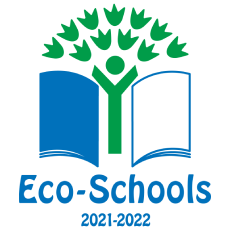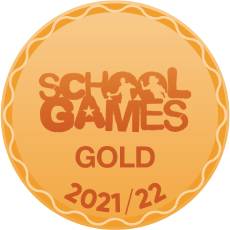English
Intent
At Elton Primary School, we believe that a quality Literacy (English) curriculum should develop children’s love of reading, writing and discussion. We have a rigorous and well organised English curriculum that provides many purposeful opportunities for reading, writing and discussion. Our curriculum closely follows the aims of the National Curriculum for English 2014 to enable all children to:
- read easily, fluently and with good understanding
- develop the habit of reading widely and often, for both pleasure and information
- acquire a wide vocabulary, an understanding of grammar and knowledge of linguistic conventions for reading, writing and spoken language
- appreciate our rich and varied literary heritage
- write clearly, accurately and coherently, adapting their language and style in and for a range of contexts, purposes and audiences
- use discussion in order to learn; they should be able to elaborate and explain clearly their understanding and ideas
- are competent in the arts of speaking and listening, making formal presentations, demonstrating to others and participating in debate.
Phonics
We use the Read Write Inc programme to teach phonics from FS1 to KS1. Children are taught the 44 different sounds of the English language and their corresponding grapheme representations. This scheme has a systematic, synthetic approach to the teaching of early reading. Starting in Nursery, our pupils are introduced to letter sounds using picture cues and handwriting rhymes. Alongside grapheme/phoneme correspondence, the children are taught how to blend sounds to read words. Phonics is taught daily throughout FS1 and KS1 and we are proud that our scores for the Phonics Screening Check are in line with national average.
Click on the Oxford Owl image to find more information about Read Write Inc, and how you can help at home. You can also find more information about Read Write Inc at the bottom of this web page.
Reading
We use the Oxford Reading Tree scheme throughout school. Rooted in reading for pleasure and with systematic phonics at its heart, it promotes varied reading styles, giving children everything they need to become confident readers. Alongside learning how to read, pupils are taught comprehension skills and to appreciate a broad range of literature. Every child reads with their teacher either 1:1 or in a group at least once a week and has a comprehension lesson every other week from KS2.
Reading involves two main elements – word recognition and language comprehension. We aim to teach every child to become a fluent reader by the end of KS1. We teach children comprehension skills so that they can interpret and understand a text. We hope to inspire children to love literature and to use the crucial life skill of reading to open the doors to the rest of the curriculum and become lifelong learners.
We follow a Mastery approach to English through the programme Pathways to Read. Units of work are delivered using high quality texts and children in all year groups are given varied opportunities for reading. Skills are built up through repetition within the units, and children apply these skills in the reading activities provided.
We deliver one whole class shared reading lesson per week from Years 2-6 with bespoke grouped reading for every pupil at least once a week as well as individual reading. For pupils still needing support with phonics from Years 2-6, we provide an individual reading programme that has phonically decodable texts at the heart of it. In our shared and grouped reads, there is a clear teaching focus with the opportunity to master key reading skills in each session. There are follow on reading tasks to enable pupils to evidence the skills they have mastered independently.
Many opportunities for widening children’s vocabulary are given through the Pathways to Read approach and this builds on the extensive work we do in school to provide our children with a rich and varied vocabulary.
You will find the end of year expectations for reading for each of our year groups in the attached documents. For further detail on the skills that your children are learning on a termly basis, please contact your class teacher.
Writing
Writing is taught daily. We follow a mastery approach to teaching writing, and use the Pathways to Write English programme in order to teach these. Lessons focus on application of Gateway Keys (skills which the children should already have learnt) and the teaching of Mastery Keys (the skills which are being explicitly taught and applied in that unit of work). The mastery approach involves the learning, practising and repeated applying of four or five particular objectives taken from the National Curriculum expectations for that year group. Children are given various opportunities to apply these objectives and so become more secure in them. Once mastered in that half term, they then become Gateway Keys for other units of work where applicable. Each Pathways to Write unit is centred around a high-quality, engaging text. These texts promote a wide range of vocabulary, offer a diverse range of genres, and introduce the children to a variety of authors and illustrators.
Pathways to Write matches the National Curriculum, and is cohesively sequenced and progressive, so that children are working at a level which matches that of their development. Teachers plan and adapt Pathways to Write units where applicable, to ensure that all children are accessing learning which is appropriate for them, and so that all children progress.
You will find the overviews for each year group's Pathways to Write unit in the attached documents. If you would like more information about what skills and objectives your child is working on in writing, then please speak to your child's class teacher.
Handwriting is taught once a week in a dedicated session for Years 2-6, however it is also taught in Spelling, English and Phonics lessons, as well as additional Handwriting lessons as the teacher feels appropriate. Teachers model our handwriting style in all areas, including marking and displays, and children are given regular feedback about presentation, letter formation and use of correct joins. We strive for a continuous cursive style of handwriting from all children, and teach and model to this. Children in EYFS and Year 1 focus on correct letter formation for all letters, ensuring that they are starting and finishing in the correct place. Cursive is then introduced in Year 2, and secured across Years 3 and 4, so that by the time children reach Years 5 and 6, their handwriting is consistently legible, neat and joined. To see how we teach children to form letters in Years 2 and above, please see the handwriting sheet in the attached documents.
Spelling
Spelling is taught four days a week in Years 2-6 (one session a week is dedicated to handwriting, where spelling words are used to apply the handwriting taught). Children still accessing Phonics will complete daily Phonics sessions at the same time.
Spelling is taught using Pathways to Spell in Years 2-6. The Pathways to Spell sessions link with our writing and reading lessons, where we also use Pathways. This means that the spelling patterns, words and vocabulary that are introduced and taught are then being applied in other subjects across the curriculum. Pathways to Spell matches the National Curriculum, and is cohesively sequenced so that previous knowledge is revisited, built upon and extended. Teachers model correct spelling and discuss grapheme-phoneme correspondence when teaching.
We encourage pupils to check and edit their spelling in their writing on a regular basis, referring to vocabulary displayed in the classroom, and various supports, such as spelling mats, which are available to them. Words that are subsequently spelt incorrectly are then demarcated by the teacher (depending on the child's level of development, this might be through highlighting the whole word in blue, highlighting the incorrect grapheme, or by placing a blue dot in the margin), and pupils use dictionaries, their peers, sound mats or year group word mats to self-correct.
Please find the overviews for Pathways to Spell in the attached documents.
Grammar
Grammar is taught through our Pathways to Write units of work. The grammar which is taught cohesively matches the National Curriculum expectations for that year group. Teachers plan in additional discrete grammar lessons to ensure that children fully understand the objectives being taught. Pupils are expected to apply the grammar they have been taught in their independent writing and they are monitored closely to check that we can see progress in this area.
To find out more about the National Curriculum expectations for your child's year group, please click on the icon below to be taken to the vocabulary, punctuation and grammar appendix of the English National Curriculum.
Speaking and Listening
Speaking and listening skills are taught throughout the Pathways to Write units of work. Pupils have to read their work to a peer or the class, perform poetry. discuss, explain and clarify their thinking. Speaking and listening skills are also taught through regular Philosophy for Children (P4C) lessons where pupils are encouraged to explain and expand ideas, consider other pupils' opinion and summarise their thoughts.
Read Write Inc (RWI)
Read Write Inc (RWI) is a phonics based programme which helps children learn to read whilst also developing a wide range of vocabulary and encouraging a love of stories. It was developed by Ruth Miskin and more information on this can be found at www.ruthmiskinliteracy.com . It is a programme is for primary school children learning to read.
How do we know RWI works?
Schools embedding this programme have been recognised by OFSTED in the HMI ‘Reading by Six Report’ (November 2010) as an example of how the best schools teach reading.
What does the RWI teaching process look like at Elton?
Children are first taught the pure ‘set 1 sounds’ so that they will be able to blend the sounds in words more easily. In School we call this ‘Fred Talk’. We do not use letter names at this stage; we simply focus on the sounds that are used to sound out words. To view correct pronunciation of the sounds watch the video below. At this stage, the children are not only taught the ‘sound’ the letter makes, but also how to form the letter, using a rhyme and picture prompt. Learning the terminology Phonics is a highly effective way of teaching reading and spelling. Blending when reading and segmenting when spelling. It is based on the link between sounds and the way we write them down (graphemes).
i-n contains 2 sounds and 2 graphemes.
c-a-t contains 3 sounds and 3 graphemes
ch-a-t contains 3 sounds and 3 graphemes
l-igh-t contains 3 sounds and 3 graphemes
c-r-a-sh contains 4 sounds and 4 graphemes
s-t-r-ee-t contains 5 sounds and 5 graphemes
Each word always contains the same number of sounds and graphemes.
Graphemes can have 1,2,3,4 or 5 letters.






